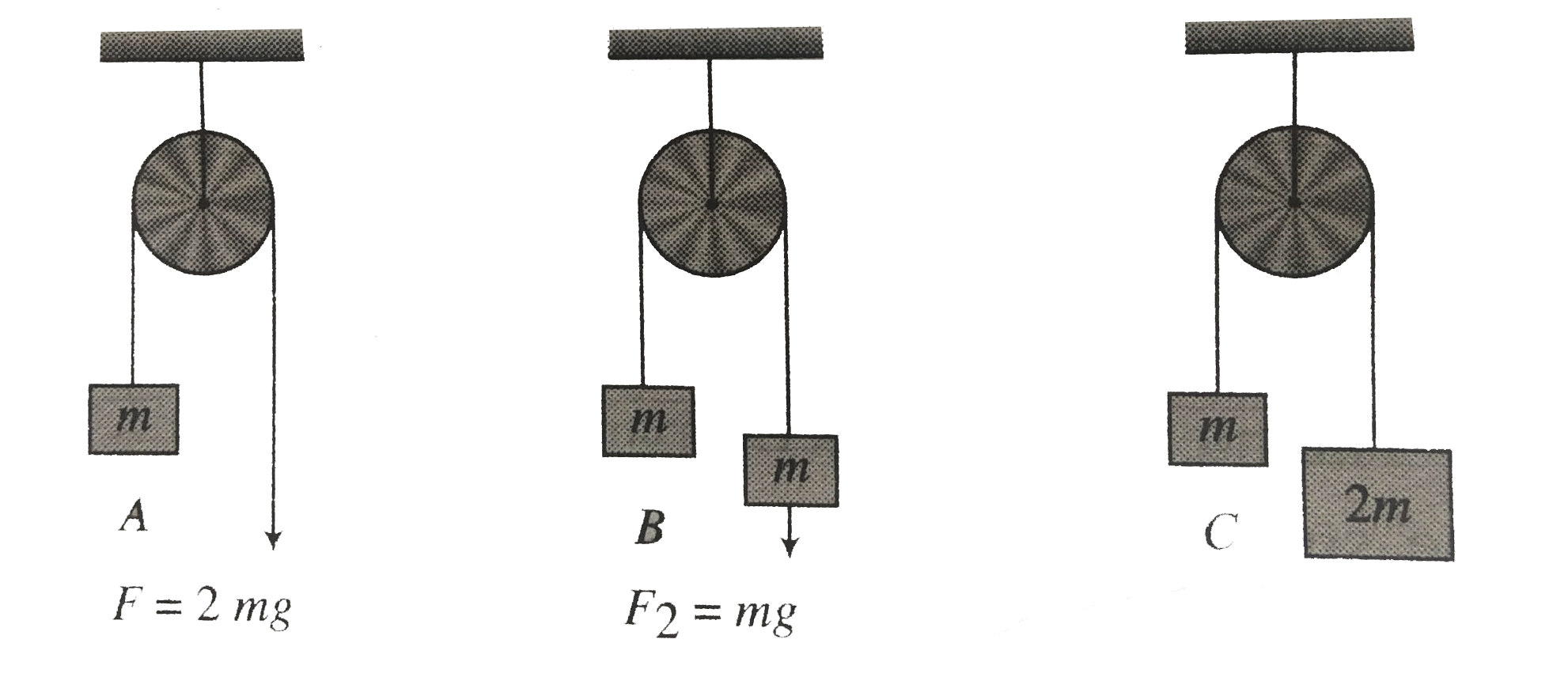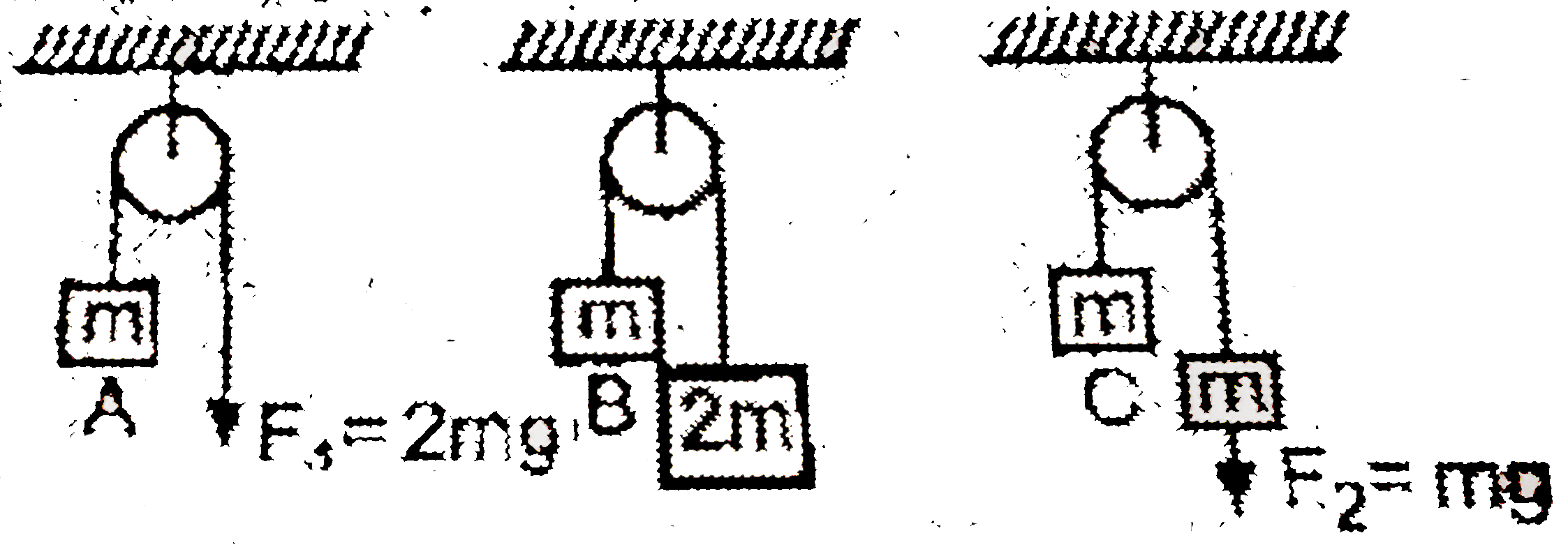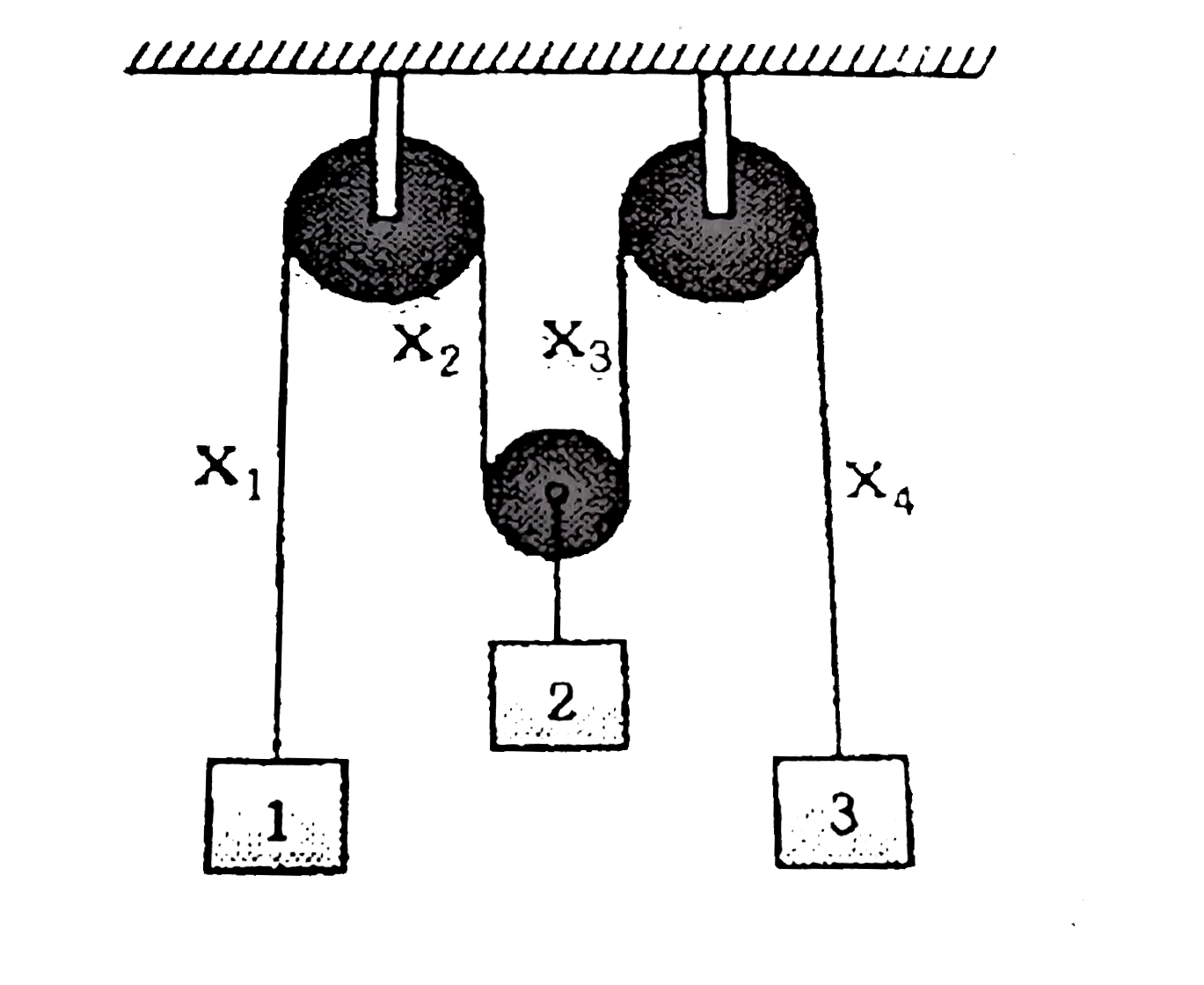In fig the blocks A, B, and C of mass m each have acceleration a1,a2,anda3, respectively. F1andF2 are external force of magnitude 2mgandmg, respectively. Then

a1=a2=a3
a1>a2>a3
a1=a2 , a2>a3
a1>a2 , a2=a3
The correct Answer is:B
Case I: a1=2mg−mgm=g
case II: a2=(2mg−mg)(2m+m)g=g3
Case III: a3=(2mg+mg−mg)2m=g2 Hence a1>a3>a2
Topper's Solved these Questions
- NEWTONS LAWS OF MOTIONBook:A2ZChapter:NEWTONS LAWS OF MOTIONExercise:Basic Concept Of Static And Kinetic Frictions
Explore 45 Videos
- NEWTONS LAWS OF MOTIONBook:A2ZChapter:NEWTONS LAWS OF MOTIONExercise:Dynamics Of Circular Motion
Explore 31 Videos
- NEWTONS LAWS OF MOTIONBook:A2ZChapter:NEWTONS LAWS OF MOTIONExercise:Equilibrium Of A Particle
Explore 19 Videos
- MOTION IN TWO DIMENSIONBook:A2ZChapter:MOTION IN TWO DIMENSIONExercise:Chapter Test
Explore 29 Videos
- OSCILLATION AND SIMPLE HARMONIC MOTIONBook:A2ZChapter:OSCILLATION AND SIMPLE HARMONIC MOTIONExercise:Chapter Test
Explore 29 Videos
Similar Questions
Knowledge Check
In fig the blocks A,B,and C of mass m each have acceleration a1,a2,anda3, repectively. F1andF2 are external force of magnitude 2mgandmg, respectively. Then
 Aa1≠a2≠a3Ba1=a2≠a3Ca1>a2>a3Da1≠a2=a3
Aa1≠a2≠a3Ba1=a2≠a3Ca1>a2>a3Da1≠a2=a3In the figure, the blocks A,B and C of mass m each have accelerations a1,a2 and a3 respectively. F1 and F2 are external forces of magnitude 2mg and mg respectively.
 Aa1=a2=a3Ba1>a3>a2Ca1=a2,a2>a3Da1>a2,a2=a3
Aa1=a2=a3Ba1>a3>a2Ca1=a2,a2>a3Da1>a2,a2=a3In the figure, the blocks A,B and C of mass m each have accelerations a1,a2 and a3 respectively. F1 and F2 are external forces of magnitude 2mg and mg respectively.
 Aa1=a2=a3Ba1>a2>a3Ca1=a2,a2>a3Da1>a2,a2=a3
Aa1=a2=a3Ba1>a2>a3Ca1=a2,a2>a3Da1>a2,a2=a3
In the figure the block A,B and C of mass m each, have acceleration a1,a2&a3 respectively. F1&F2 are external forces of magnitude 2 mg and mg respectively :

View SolutionIn the figure, blocks A, B and C of mass m each have acceleration a1, a2 and a3 respectively. F1 and F2 are external forces of magnitudes 2mg and mg respectively, then :

View SolutionIn the adjacent figure, all the pulleys are frictioniess and massless, all the stringes are also massless. The relation between a1,a2 and a3 is (where a1,a2 and a3 are the acceleration of masses m1,m2 and m3 respectively in the direction as shown in the figure)

View SolutionThree rectangles A1,A2 and A3 have the same area Their lengths a1,a2 and a3 respectively are such that a1<a2<a3. Cylinders C1,C2 and C3 are formed from A1,A2 and A3 respectively by joining the parallel sides along the breadth. Then,

View SolutionIf pulleys shown in the diagram are smooth and massless and a1 and a2 are acceleration of blocks of mass 4 kg and 8 kg respectively, then -

View Solution



